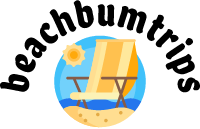South Carolina’s coastline is a treasure trove for shell collectors. From intricate conch shells to delicate sand dollars, beachgoers can find an array of seashells washed ashore. But where should you go if you want to discover these natural gems? In this guide, we’ll explore the top beaches for shell collecting in South Carolina, where you can stroll along the shore and find beautiful shells to add to your collection.
Why South Carolina is a Haven for Shell Collectors
South Carolina is not only known for its charming towns and southern hospitality but also for its rich coastal ecosystems. The state’s coastline stretches over 180 miles, with a variety of beaches offering unique opportunities for shell collecting. Tidal patterns, currents, and the rich marine life in the Atlantic Ocean contribute to the abundance of shells found along South Carolina’s shores.
What Kind of Shells Can You Find in South Carolina?
The state’s beaches are home to a diverse range of seashells. Some of the most popular types include:
- Conch Shells
- Whelks
- Olive Shells
- Sand Dollars
- Shark Teeth
- Scallops
Each beach offers its own distinct mix of shells, depending on its location, tide, and local marine activity. Whether you’re looking for vibrant conch shells or delicate coquina shells, you’re bound to find something special on the shores of South Carolina.
When is the Best Time to Go Shell Collecting in South Carolina?
The best time to collect shells is during low tide, especially after a storm. The water recedes, revealing fresh shells that have been washed up overnight. Early mornings are ideal, as the beaches tend to be less crowded, giving you first pick of the shells before other beachgoers arrive. Shells are also more likely to appear during the winter months when tides are stronger and waves churn up more ocean treasures.
Top Beaches for Shell Collecting in South Carolina

1. Hunting Island State Park
Hunting Island State Park is a favorite among shell collectors and nature lovers alike. Located just outside of Beaufort, this barrier island offers over 5 miles of untouched beaches. The beach’s remote location means fewer crowds and more opportunities to find rare shells. Hunting Island is also home to loggerhead turtles, and visitors may even come across turtle nests during their shell collecting adventures.
Helpful Hint:
Check the tidal charts before heading out to Hunting Island. Low tide is the optimal time to discover shells along the shore, and if you visit just after a storm, your chances of finding unique treasures increase.
2. Edisto Beach
Edisto Beach is another gem on South Carolina’s coast, known for its wide variety of shells, especially whelks and olive shells. The beach’s gentle tides make it ideal for families and casual shell collectors alike. You can often find shark teeth here as well, making it a hit for those looking for something a little different to add to their collection.
Stats:
Did you know that Edisto Beach is considered one of the best spots on the East Coast for finding shark teeth? On average, collectors can find at least 2-3 teeth per visit during low tide.
3. Bull Island
Bull Island is accessible only by ferry, adding a bit of adventure to your shelling trip. This uninhabited barrier island is part of the Cape Romain National Wildlife Refuge and offers pristine beaches that are perfect for finding a wide array of shells. The isolation of Bull Island means you’ll have less competition for the best finds, and the island’s diverse marine life ensures a treasure trove of shells at every visit.
4. Folly Beach
Located just a short drive from Charleston, Folly Beach is known for its laid-back vibe and exceptional shelling opportunities. While the beach itself is popular with tourists, the far ends of the island tend to be less crowded and offer excellent spots for collecting shells. You can often find conch shells, sand dollars, and various types of whelks along the shore.
Helpful Hint:
If you’re visiting Folly Beach, head to the Morris Island Lighthouse area. This spot is known for its abundance of sand dollars, especially during low tide.
5. Isle of Palms
Isle of Palms, just north of Charleston, is a fantastic spot for casual shell collectors. Known for its family-friendly atmosphere, this beach often has an abundance of small, colorful shells scattered along the shoreline. The gentle waves make it an excellent spot for finding intact sand dollars and small whelks, especially during early mornings and low tide.
What makes Isle of Palms stand out is its accessibility. Whether you’re staying in Charleston or Mount Pleasant, it’s just a short drive away, making it an easy day trip for shell enthusiasts. The broad beaches also make it a great place to explore and find hidden treasures tucked in the sand.
Helpful Hint:
Visit Isle of Palms at sunrise to beat the crowds. The low light and cool temperatures provide a peaceful setting for shell collecting, and you’ll have the best chance to find undisturbed shells before other beachgoers arrive.
6. Pawleys Island
Pawleys Island is a quieter beach compared to some of the more tourist-heavy destinations in South Carolina. Its laid-back vibe and pristine shoreline make it a haven for shell collectors. Pawleys is especially known for its abundance of olive shells and occasionally sand dollars. The beach is long and mostly undeveloped, which means there are fewer distractions and more space to comb through for the perfect shells.
Beyond the typical shells, you might even stumble upon a fossilized shark tooth or two, which adds an extra level of excitement to any shelling adventure. Be sure to check the tide charts, as low tide reveals even more opportunities for shell hunting.
Why You Shouldn’t Miss Pawleys Island
Pawleys Island’s seclusion is its greatest strength. If you’re looking for a peaceful, reflective shelling experience, this is the place to be. There’s something almost meditative about walking along the quiet shores of Pawleys, listening to the soft waves and picking up nature’s treasures. For anyone who prefers a more relaxed and less crowded environment, Pawleys Island is the perfect shelling destination.
7. Seabrook Island
Seabrook Island is a private, gated beach community, but if you have access or are staying there, it’s an ideal location for shell collecting. The beach here is pristine and tends to be less picked over due to its restricted access. Sand dollars, conch shells, and even starfish are common finds. Additionally, the dunes and marshlands surrounding Seabrook Island contribute to the abundance of unique shells that wash ashore.
Because of the island’s private nature, you won’t face the large crowds that other beaches attract, giving you a better chance at discovering shells that haven’t already been claimed. Plus, the natural beauty of Seabrook is unmatched, making the experience not only about collecting shells but also soaking in the serene coastal atmosphere.
Best Shell Collecting Beaches in South Carolina
| Beach | Types of Shells Found | Best Time for Shelling | Accessibility |
|---|---|---|---|
| Hunting Island State Park | Conch, whelks, sand dollars | Early morning, low tide | Public, easy parking |
| Edisto Beach | Olive shells, shark teeth | Low tide, post-storm | Public, family-friendly |
| Pawleys Island | Olive shells, whelks | Early morning, winter months | Public, secluded |
| Folly Beach | Sand dollars, conch | Low tide, Morris Island area | Public, easy access |
| Seabrook Island | Conch, starfish | Any time (limited visitors) | Private, restricted access |
Eco-Friendly Shell Collecting Tips
While collecting seashells can be a fun and rewarding hobby, it’s important to do it responsibly. Here are some tips for sustainable shell collecting:
- Only collect empty shells: Make sure there are no living creatures inside the shells you collect.
- Limit your collection: While it’s tempting to take every beautiful shell you find, remember that these are part of the beach’s ecosystem.
- Leave fragile shells behind: If a shell is broken or too fragile, consider leaving it for others to enjoy or for the ecosystem to reclaim.
- Don’t disturb protected areas: Be mindful of any signs or rules indicating protected wildlife areas, particularly near turtle nests or bird habitats.
How to Preserve and Display Your Shell Collection

After a successful day of shell collecting, you’ll want to make sure your finds are properly cleaned and preserved. First, rinse your shells in fresh water to remove any sand or salt. Then, soak them in a mixture of water and a small amount of bleach to remove any lingering odors. Be sure not to over-soak delicate shells, as this can cause them to become brittle.
Once your shells are clean, you can display them in a variety of creative ways. Consider using shadow boxes, glass jars, or decorative bowls to showcase your collection. For a beachy touch, arrange them alongside driftwood or sea glass to create a beautiful coastal display in your home.
What to Bring on Your Shelling Adventure
To make the most of your shell collecting trip, it’s important to be prepared. Here’s a list of essentials to bring along:
- Mesh Bag or Bucket: For carrying your shells.
- Sunscreen and Hat: South Carolina sun can be strong, so protect yourself!
- Water Shoes: Many shells can be sharp, and water shoes will protect your feet.
- Towel or Blanket: Perfect for sitting and sorting through your shells.
- Guidebook: A seashell identification book will help you learn more about your finds.
Advantages and Challenges of Shell Collecting in South Carolina
Pros
- Vast coastline offers a variety of beaches with diverse shell types.
- Low tide and post-storm conditions make for abundant shell finds.
- Many beaches are less crowded, especially in winter, offering peaceful shelling experiences.
- Potential to discover rare and unique shells like conch, sand dollars, and shark teeth.
- Several beaches offer family-friendly environments with easy access to shelling spots.
Cons
- Some beaches may require permits or restricted access (e.g., Seabrook Island).
- Not all beaches are rich in shells; some might have more visitors, making it harder to find shells.
- Weather conditions and tides can be unpredictable, limiting ideal shelling times.
- Shells can be fragile and prone to breaking if not handled carefully.
- Need to practice eco-friendly shelling, which may limit the number of shells you can take.
FAQs
Final Words
South Carolina offers some of the best shelling experiences along the East Coast, with a variety of beaches catering to all kinds of shell collectors. Whether you’re after vibrant conch shells, delicate sand dollars, or even fossilized shark teeth, the Palmetto State’s beaches have something special to offer. By visiting top spots like Hunting Island, Edisto Beach, and Pawleys Island, you can uncover treasures that make your trip truly memorable. Be sure to practice eco-friendly shelling, respect wildlife areas, and plan your visit during low tide for the best results. South Carolina’s coastal beauty, combined with its shelling opportunities, makes it a perfect destination for both beginners and seasoned collectors alike.









